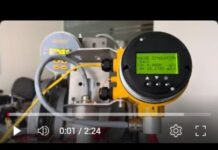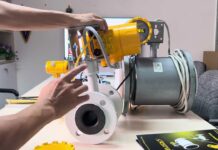PROXIMITY CAPACITIVE SENSORS SC SERIES
WORKING PRINCIPLE
Capacitive sensors contain an oscillator transistor in the front section. The oscillating circuit R-C (resistor-capacititor) is influenced by variations in capacity in fact when any material, solid or liquid (water, wood, metals, coffee, powders, etc.) come into contact with the active surface of the sensor the capacitance increases putting into action the oscillator up until the threshold of trigger inverts. By introducing a change in the condition of the final stage and therefore in the command of the external load a potentiometer makes fine adjustements to the switching distance. All the sensors are protected against a change of polarity and electrical disturbances of inductive origin, and they are protected against short circuits.
They can be supplied with rapid or delayed switching. The plastic parts of the capacitive sensors (body, plugs, oulets and locknuts) are made of makrolon which is not toxic, non static and resistant to abrasives.

CHOICE OF A CAPACITIVE SENSOR
When choosing a capacitive sensor the final use should be kept in mind, that is the material to be controlled, its form and composition. The reduction factors related to every material should be remembered and also their physical mass.
If possible it is recommended to use not embeddable model, that is not mounted flush with the surface as it is possible to take advantage of the much greater sensitive field, this means that the sensor need not be set to the maximum where it would be more prone to effects from temperature variations, humidity, powder deposits, etc.
If it is necessary to install the sensor flush with the surface it is advised to make a setting which is not too close to the maximum.
The main difference between the totally screened and partially screened types of sensors is that at equal intervention distances the former requires a sensitivity of about the double of the latter and therefore functions under more critical conditions.

APPLICATIONS
Capacitive sensors are used widely as limit switches which are sensitive to all types of materials, as limit controls for sensing the maximum and minimum levels of liquids, powders, granules, etc. in silos and various containers. They can also be used for sensing or counting metallic and non metallic objects.




















